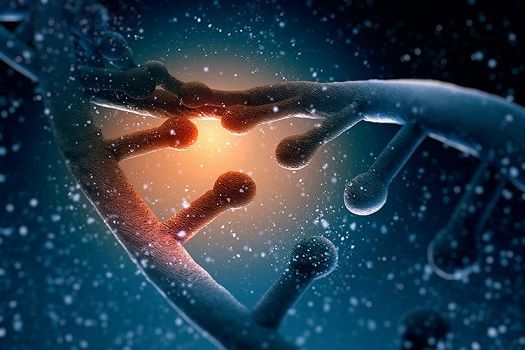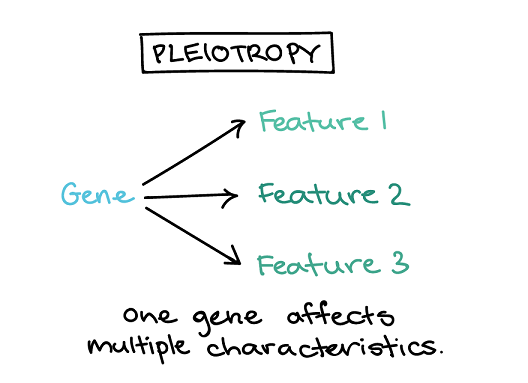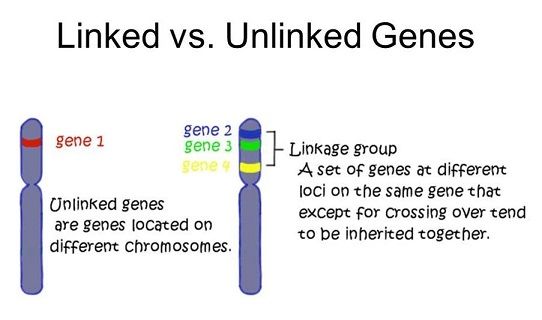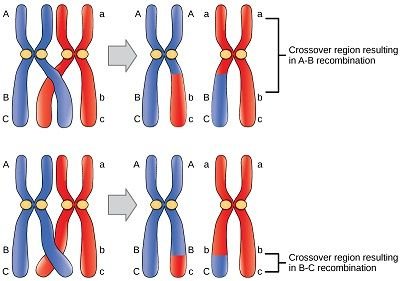How traits are inherited across generation #4

The discussion on how traits are inherited across generations has been a long and perhaps, an interesting one. From Mendel's experiment leading to formulation of law of segregation of genes to some unique situations that defy the law and then to another experiment that led to the formulation of law of independent assortment of genes. Below are the links to the previous posts on the topic;
- How are traits inherited across generations?
- How traits are inherited across generation #2
- How traits are inherited across generations #3
The complexity that undelies the differences between two types can be somehow confusing. Even though characters may have more than one form of expression because of environmental or hereditary differences, Mendel chose to study characters that are least affected by environmental or hereditaty differences. He studied characters that are least affected by the environment and that are easily classified into a few categories. His first contribution to the understanding of how characters are inherited was to relate basic observed differences to a single hereditary factor. When an individual has a gene P, he has a normal pigmentation, whereas when he inherits the two alleles pp from both parents, he is an albino. Thus, Mendel was able to assign observed morphological differences to hereditary factors or alleles. Therefore, it can be concluded that a change in a hereditary factor is usually accompanied by an observable phenotypic difference.
Interractions of genes
Mendel's world was one in which every gene acts independently of the other genes, that is, one gene controls one observable character. It was later found that most observable characters are not conditioned by one, but several genes. In essence, Mendel's observations really represented the exception rather than the rule.
Epistasis
Epistasis or epistatic gene interaction is a genetic phenomenon where two or more segregating genes or alleles interact to condition a single trait. Epitasis is best exemplified by the experiment of Bateson and Punnett who analyzed the various types of combs in chicken during their time. Four basic comb types were observed - single, walnut, rose and pea. A cross between rose comb chicken and pea comb chicken yielded all walnut comb progenies at the first filial generation, a new phenotype that entirely differs from the two parents. Self crossing of the walnut comb progenies from the first filial generation yielded walnut, rose, pea and a new comb progeny, single. Even though the the F2 segregated in the ratio 9:3:3:1 as expected from Mendel's law, the appearance of a new trait showed that a kind of interraction has taken place between two or more of the genes responsible for the comb traits.Other traits that have been studied and found to be conditioned by one or more genes include kernel colour in wheats, flower colour in seet pea, fruit colour in squash plant, Malvidin production in Primula, and so on.
Are there examples of epistatic gene interaction in human? The answer is yes. Albinism and red hair in human are two conditions that are inherited by epistatic gene interactions. You can read more about both conditions here
Pleiotropy
Just like epistasis, pleitropy represents another exception to Mendel's world of genetics. In pleiotropy, a gene produces more than one traits. Mendel observed that in one of his crosses that the colour of flowers are always associated with two other phyiscal features - the seedcoat and the axil colours. Pea plants with white flowers were found to have colourless seddcoats and axils while those with purple flowers were always found to be associated with brown-gray seedcoats and redish axils. This observation was later pronounced to be a result of pleiotropy.Most of the genes inplicated in human genetic disorders have been found to be pleiotropic in nature. The sickle cell trait is an example in which gene may have more than one phenotypic effect. A sickler has a defective haemoglobin molecule. Thus:
- HbA HbA gives normal haemoglobin
- HbA HbS gives sickle cell trait
- HbS HbS gives a sickler
The red blood cell of HbA HbS individuals are more or less normal and in addition. such individuals are slightly protected against the extreme symptoms of malaria. However, they suffer from other physiological defects. Sicklers on the other hand hardly survive to reproductive age without extensive medical attention. Affected individuals suffer from anemia, clumping of red blood corpsucles in veins and eventual death.
Cytoplasmic inheritance
Some inheritance transcend the genes located on chromosomes to genes located in the cytoplasm. The concept of genes being present in the cytoplasm is contrary to the originally held belief that all the hereditary materials are located in the nucleus. These genes are referred to as cytogenes. They are quite smaller in number and show different behaviour from the nuclear genes making them to be liable to easy omission. Where their effects are quite obvious, they could be passed as an abnormal case. The subject of cytoplasmic inheritance will be further discussed in my future posts.
Chromosome and linkages
Let us take a little stroll down memory lane. Genetic informations are stored in form of nuclear materials in all all living organisms. These materials are made up mainly of chromatin which in turn is made up deoxy ribonucleic acids and proteins. During cell divisions, the chromatin material condenses, thickened and are seen as chromosomes.
The chromosomes therefore carries genetic information in form of genes. How many genes are stored on a chromosome actually depends on the kind of organisms in question. Even different chromosomes within the same cells can have different number of genes on them. For example, the bacterium Escherichia coli has just a single circular chromosome which has about 5,000 protein-coding genes, although this number depends on the strain. Human chromosomes have protein-coding genes ranging between 48 and 2,000.
Normally, chromosomes are inherited as a whole by daughter cells during cell divisions with each chromatid moving to opposite poles. What does this signifies? It simply means genes that are present on the same chromosomes are going to be automatically inherited together. This is termed [linkage] in genetics. Genes located on the same chromosmes are linked together in inheritance.
Recombinations during meiosis
From the word 'recombine', some of my readers would probably have an idea what recombination means. In the prophase I of first meiotic division, homologous chromosomes usually pair up to give a tetrad.
At some point, there is an exchange of chromosomal segments between homologous pairs of chromosomes. An exchange of chromosomal segments means an automatical recombination of genes within the segments. This in itself represents an exception to law of independent assortment of genes. The genes on recombinat chromosomes will be quite different from genes on a normal chromosome is several ways.Summary
Majority of pattern of trait inheritance do not follow Mendelian law. Since majority cannot be tagged abnormal, Mendel's law could therefore be termed the actual exceptions to the normal pattern of inheritance. Gene interactions in form of epistasis and pleiotropy is a major pathway through which a lot of characters are conditioned in living organisms while cytoplasmic inheritance, chromosome linkage and recombination are some other processes through which traits are inherited from generations to generations.
I really do hope you have benefited from this session.
Thank you for reading.
References
ndsu:Gene Interactions
stack exchange: exceptions to Mendel's law
study.com: epistasis
khan academy: pleiotropy






Great informative post, even I am not very comfortable in biology themes, it's was not that difficult for me to read it :)
thank you @tradewolf. I'm glad you benefited, no matter how little
Also characters controlled by genes can be transmitted. in other words,inherited characters are determined by genes.
Well done!
thanks!
BRO!